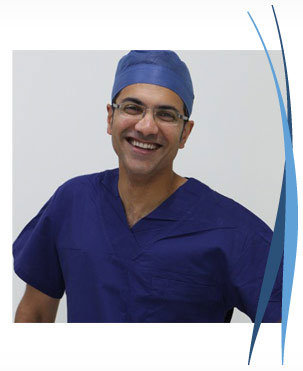
Reducing the Risk of Breast Implant Complications – The 14 point plan for surgery
If you’ve been following the implant safety issue in the media lately you might have read about the 14 point plan that has been referred to as one of the best ways for your surgeon to minimise any chance of infection around breast implants. This plan combines proven strategies that when used by the surgeon, greatly reduces the number of bacteria attaching to the implants hence minimising the risk of breast implant complications.

Professor Anand Deva, a highly regarded Australian Plastic Surgeon, and founder of Integrated Specialist Healthcare Education and Research Foundation and www.saferbreastimplants.org has long been an advocate of the 14 point plan. His work has changed practice around the world leading to a marked reduction in complications following breast implant surgery. We spoke to Prof. Deva about the importance of implant safety – is your surgeon using the 14 point plan?
Breast Implant Bacteria
Just in case you aren’t up to speed, the bacteria we’re talking about is also called biofilm bacteria and attaches itself to the surface of breast implants (macro-textured implants are the biggest culprits) and is known to cause capsular contracture. More recently, his work has raised the possibility of infection leading to BIA-ALCL, a rare form of lymphoma around breast implants. Prof Deva expands, “Biofilm theory was just starting in the late 90’s, but then I started treating patients with capsular contracture and I thought “has anyone looked for biofilm” – so we were the first in the world to show there was biofilm in a patient with thick hard painful capsules and repeated surgery. Biofilms are now recognised as the leading cause of implant failure in medicine and can infect not just breast implants but orthopaedic implants, cochlear implants, contact lenses, catheters and heart valves.”

The use of proven strategies to reduce infection has been shown to reduce the risk of complications by a factor of 10. Choosing your implants wisely is the first step, but secondly, you might want to ask your surgeon if they have heard of and indeed follow, the 14 point plan.
The 14 Point Plan – Implant Safety
What actually is exactly is this 14 point plan? We were going to list the 14 points in the plan but our eyes glazed over a little as a lot of it is medical talk and obviously meant for surgeons with years and years of training. If you want to check it out for yourself, click here.
Basically, what it comes down to is the surgeon being completely vigilant with regards to their implants insertion procedure and recognising that their failure to do so increases the patient’s chances of developing capsular contracture and now possibly BIA-ALCL.
Professor Anand Deva says, “We are trying to ensure colleagues are practising the plan, but realising they also have the strength of evidence behind them. If you look at contracture which is the most common reason women present after breast augmentation – revision is 15% in aesthetics and 30% in reconstruction. Evidence now shows that you can reduce the risk to under 1% using the 14 point plan.We all want to do the best for our patients and so this is a proven way of doing just that.”
“The problem is that Surgeons don’t like being told what to do – many of them don’t read the literature, or they don’t understand it. With new information linking infection to possible BIA-ALCL – it is now more important than ever to fight infection.”
We asked Prof Deva what patients wanting a breast augmentation with implants could do to take the power into their own hands? He says, “I would encourage patients to ask their surgeon about what they do to reduce the risk of infection. The Safer Implants website has a pledge surgeons can take – 500 surgeons around the world have already taken the pledge. It is a comfort to know that your surgeon is on the list and has taken the pledge.”
If you’d like more information on the 14 point plan check out the www.saferbreastimplants.org website.
To read more about BIA-ALCL and ways to minimise your risks with a breast augmentation check out the blog below:
The Link Between Breast Implants and ALCL Lymphoma Cancer
Further Reading Related to Breast Implant
- What Are the Most Natural Looking Breast Implants – Dr Watts Surgeon Perth
- History of Breast Implants and Breast Enlargement Surgery by Dr Carmen Munteanu
- Bra Cup Sizes related to Breast Implant Sizes – Dr Bish Soliman
- What Is the Right Implant Placement Option – Dr Michael Kernohan
- Types of Breast Implant Incisions by Dr Jake Lim
- Breast Implants Profile, Projection, Shape, Sizes and More


